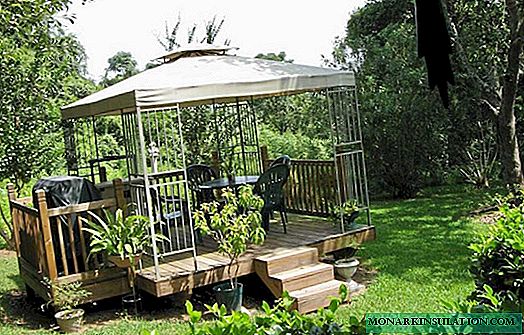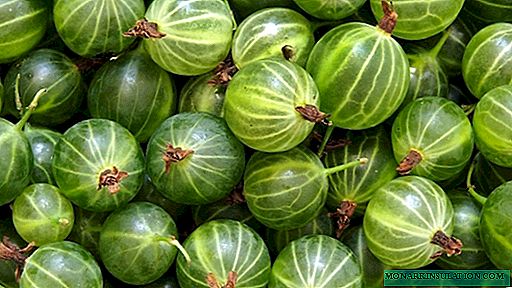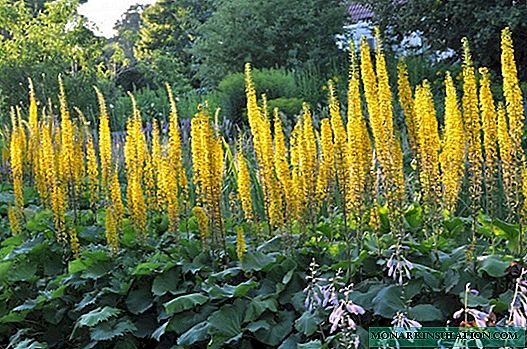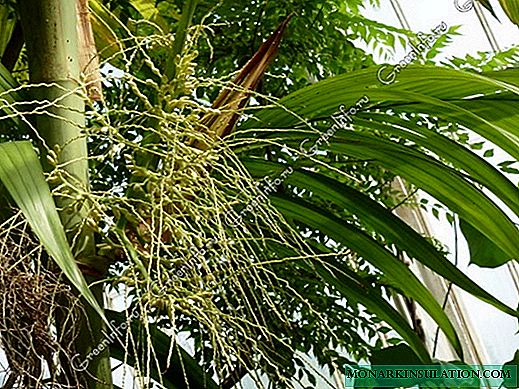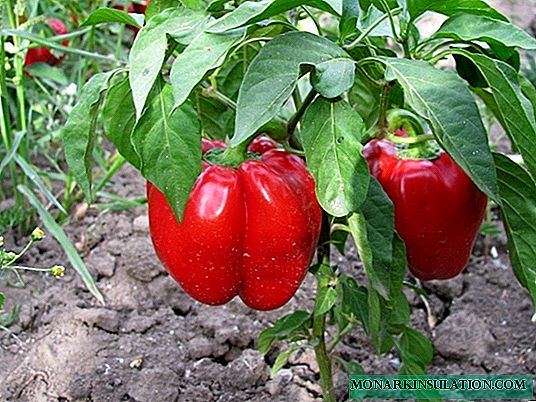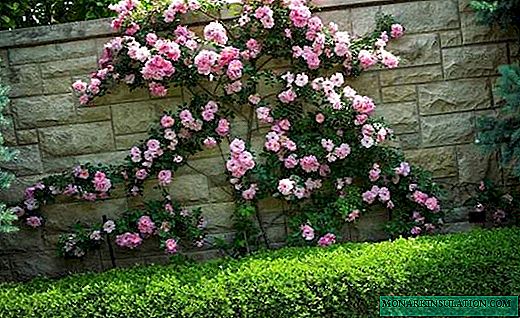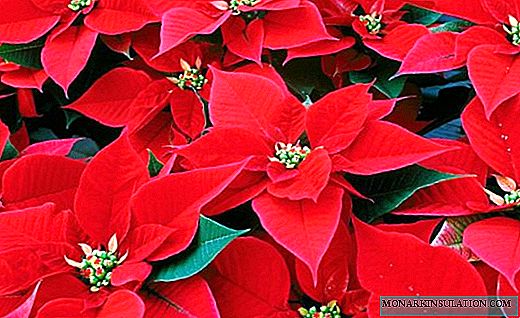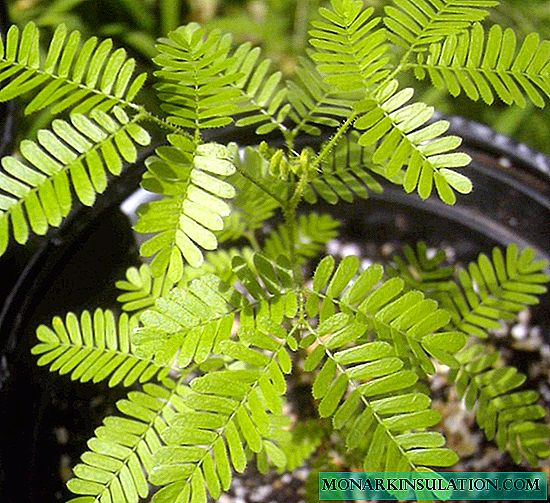Graceful daisies katananhe will not leave indifferent. They will dilute the usual colors of the front garden with blue tones. This Mediterranean guest is compared with cornflowers or chicory, but its very long and plentiful flowering is noted.

Botanical characteristics
Katananha belongs to the Asteraceae family and since ancient times was considered a love stimulant and a means for love spell. Translated from Greek, her name means "strong stimulant." This herbaceous plant is a perennial, although in our country lives no more than 2-3 years. Thanks to abundant self-sowing, plantings are updated independently, it is enough to remove dried shoots. The root system is not massive and consists of several surface roots.
Thin, but elastic upright stems have many lateral shoots in the upper part, so they form a lush bush up to 1 m in height. When the stem is cut, milky juice is secreted. Shoots naked, plentifully pubescent with short villi.
Cirrus leaves 15-30 cm long are collected in a basal rosette. The foliage is straight or slightly curved, painted in bright green tones. The edges of the leaves are smooth, with sparse long teeth in the upper part.











Flowers adorn the tops of the stems and have the shape of a complex basket. In one inflorescence can be up to 5 buds, which are opened in turn. The average size of the flowers is 4-5 cm. Petals are arranged in several rows. The longest ones are at the bottom, and closer to the center, they are shortened. The outer edge of the narrow petals is serrated. The hard surface is blue, lilac, yellow or white. The core is darker (purple, brown or black), about a dozen bright yellow stamens with long legs are visible on it.
The peak of flowering occurs in May-July, but single flowers appear until the frost. After the petals wither, a very nice silver seed box is preserved. It has an ovoid shape and is covered with short scales. Seeds are round, small. 1 g contains about 500 pieces.
Popular varieties
The genus katananhe does not differ in variety. In total there are 5 species and several decorative varieties. Domestic gardeners are especially appreciated katananhe blue. In Europe, the species received the name "Arrows of Cupid." The height of the lush bushes does not exceed 60 cm. The stems are strong, erect, suitable for shearing. Ribbon-shaped leaves are collected in dense rosettes at the base and reach a length of up to 30 cm. A small fluff is noticeable on the stems and lower surface of the leaves. Large flowers, up to 5 cm in diameter, have a blue or light purple color. Petals are gear. The purple core stands out as a bright spot. The species has several decorative varieties:
- white (Dutch lily) - with snow-white flowers;
- fun - gray-green shoots and foliage crowned with light lilac flowers;
- major - bright, lilac flowers.

Katananha is yellow. A low grassy annual rises 30-40 cm above the ground. The basal rosette consists of lanceolate pubescent leaves up to 15 cm long. 1-2 dentate processes are visible on their lateral surfaces. Smooth stems have small apical flowers up to 3 cm in diameter. In June, yellow baskets with reed serrated petals begin to blossom. Flowering continues until the end of summer.

Katananha sod. It is rare in culture. It differs in a dense bunch of hard foliage at the base. The length of the leaves does not exceed 7 cm. Leaflets are solid, extended at the end. The stems are very short (up to 15 cm), crowned with small flowers of a rich yellow hue. These dwarf bushes in the natural environment are found on rocky terrain or low cliffs.

Katananha sandy well adapted to depleted sandy soils and drought. Narrow and short foliage, like long stems, is painted in green and yellow shades. What remind dried shoots on heat. Flowers in diameter are 3-4 cm and are distinguished by light yellow, sand coloring.

Breeding methods
Katananche is propagated by division of the bush or seeds. The first method is not particularly common, as it causes more trouble. If you had to deal with this procedure, then the bushes are dug up in mid-May and divided into 3-4 parts. New shoots are immediately dug into the soil, trying not to deform the roots. It is important to maintain a distance of at least 30 cm in planting to ensure normal soil aeration.
Seeds remain viable for 3 years from the date of collection. They can be sown for seedlings or immediately in open ground. It will depend on when the flowering begins. Crops for seedlings are produced in early March. To do this, use light fertile soil with the addition of sand and humus leaf. In young plants, the roots are very thin and delicate, so as not to damage them when transplanted, they are sown immediately in separate pots. Small seeds are deepened by no more than 1 cm, and the pot is covered with a film until seedlings appear. The katanankhe sprouts within 1-3 weeks. Reinforced shoots are opened and exposed on a sunny windowsill. Gradually reduce the air temperature to + 14 ... 15 ° C. In May, grown seedlings are planted in a garden in a permanent place. In order not to damage the rhizome, the transplant is made with a whole clod of earth from the pot.

In May, seeds are sown in May immediately to a permanent place. In a temperate climate, in spring you can find many self-seeding near old bushes. These plants can be used as seedlings. With seed propagation, the appearance of flowers in the first year is unlikely.
Care Rules
Katananha is considered a very tenacious and unpretentious plant. Prefers light soddy or sandy loamy soils, neutral or slightly alkaline. Feels good even on depleted substrates, but needs drainage. It is better to dry the earth than to overfill the roots, so water the bushes only with prolonged drought.
To obtain abundant flowering, the plant is planted on the sunny side or in a slight shade. Katananha is not afraid of strong or cold winds. Its thin stems easily bend to the ground, but quickly recover.
The soil must be regularly loosened and weed weed. This will provide air access to the roots. In spring, lime should be added to the ground, such a procedure is carried out annually. The plant rarely needs top dressing; it is enough to mulch the soil with fallen leaves in the fall or to introduce complex fertilizer 1-2 times during the flowering period.

After the baskets fade, decorative seed boxes remain, so timely pruning of wilted buds is not needed. But in the fall, the entire ground part is cut off.
The plant is well adapted to frost and can withstand short-term temperature drops to -30 ° C. However, in snowless cold winters, it is advisable to cover the roots with branches and fallen leaves.
With proper moisture and the absence of dampness, the bushes do not suffer from the invasion of parasites and are resistant to disease.
The use of katananhe
Katananha looks spectacular in massive group landings. It is densely covered with flowers of pleasant colors, which harmoniously fit into the composition of any style. The undersized species are suitable for growing on stony masonry and rock gardens.

Flowers are used in the center of the composition, they are not able to create a hedge or decorate borders because of wide, spreading shoots. Looks good in the neighborhood with stunted brightly flowering plants.
Inflorescences on high stems are used to make live and dry bouquets. Strengthening and stimulating decoctions are still made from stalks and leaves of katanankhe.

